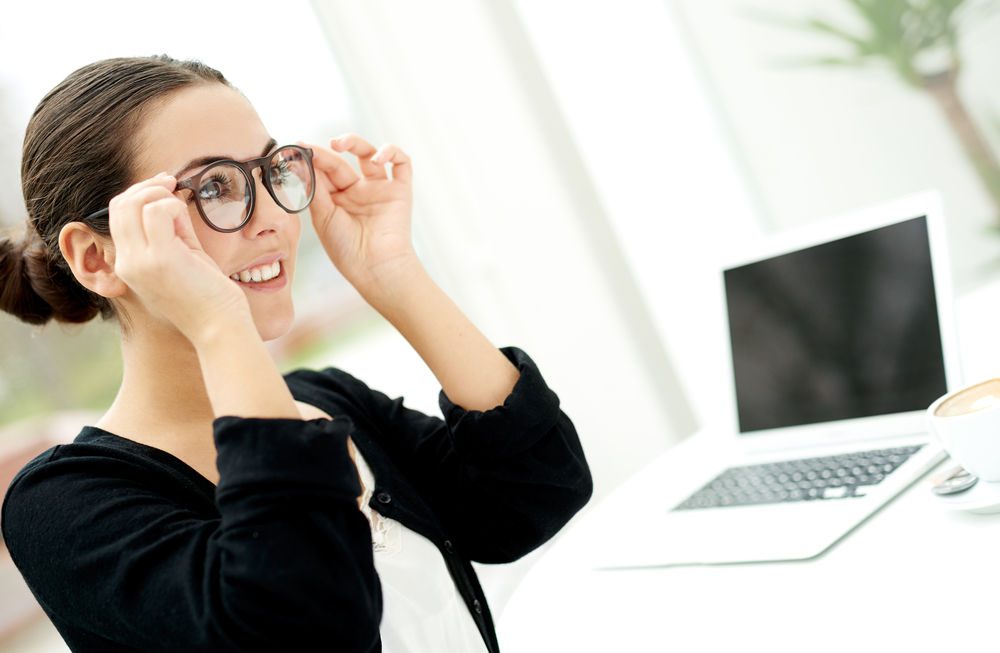

We seem to learn how our technological advances impact our health at least a generation after they are introduced. Do you remember when all phone calls were audio only? Now we know that spending many hours looking at a screen (including video calls) can be harmful to our eyes’ health. Many of us spend a great deal of time looking collectively at screens of a smartphone, tablet, laptop, computer and TV. If you or your loved ones engage in significant stretches of screen time, make sure you know how to protect your eyes from damage typically caused by this technology.
About Eyestrain
Eyestrain occurs when your eyes get tired from intense use, and is frequently caused by reading, working or playing on a screen. Some professionals call this computer vision syndrome or digital eyestrain. In some cases, an underlying eye problem such as an eye muscle imbalance or uncorrected vision can cause or worsen digital eyestrain. Eyestrain signs and symptoms may include:
- Sore, tired, burning or itching eyes
- Watery or dry eyes
- Blurred or double vision
- Headache
- Increased sensitivity to light
- Difficulty focusing
Digital devices such as computer screens, tablets, smartphones and televisions give off high intensity visible light – also known as high-energy blue light. This high-energy blue light is known to cause gradual oxidation and deterioration of the macula and leaves eyes more susceptible to macular degeneration, contrast sensitivity and issues with glare.
According to the Vision Council, a company that represents manufacturers and suppliers in the optical industry, digital eyestrain is a growing problem. According to their research:
- As much as 95 percent of Americans spend two or more hours each day using a personal digital device.
- Nearly 30 percent of Americans spend nine or more hours using a digital device.
- Americans look at their mobile phones an average of 100 times each day.
- Nearly 70 percent of Millennials, 63 percent of Gen Xers and 57 percent of Baby Boomers report symptoms of digital eyestrain.
- Approximately 61 percent of Americans say they experience eye problems that include dryness, irritation and blurred vision.
Most Americans couldn’t imagine getting through a day without screen time. As such, consider taking steps to prevent or reduce digital eyestrain.
6 Ways to Reduce Eyestrain
Causing eye inflammation, there are many factors that contribute to digital eyestrain:
- Viewing a screen in close proximity
- Spending long periods of time in front of the screen
- Looking at small font sizes
- Poor posture in front of a screen
- Large amounts of blue light emitted from the screen
Besides swearing off digitized screens, the best way to minimize digital eyestrain is by working to mitigate the factors listed above. The top six strategies for reducing digital eyestrain include:
- Design – Design your workspace to encourage good posture and ideal viewing distances. Center screens directly in front of you, sit at least arms-length away from any screen, position your screen so that the top is level with your eyes and make adjustments to avoid screen glare.
- Eye Wear – Wear glasses that are prescribed for specific screen-related activities. Consider investing in eyewear with anti-reflective lenses and a specially formulated coating that blocks and/or absorbs blue light.
- Reduce Glare – Bright lighting and too much glare can strain the eyes. The worst glare culprits are generally from light sources above or behind you, including fluorescent lighting and sunlight.
- 20/20/20 – Break up the length of time you look at a screen. Many practitioners advocate the 20/20/20 rule; take a 20 second break every 20 minutes to look at something at least 20 feet away.
- Massage – Massage your eyelids and muscles over your brow, temple and upper cheek once or twice daily. While each area only needs about 10 seconds of gentle massage, the simple act of rubbing the muscles in the area around the eye will help the muscles relax, which reduces some of the symptoms of eyestrain.
- Supplement – Several antioxidants help protect against oxidative stress in the eyes and help counteract high-intensity blue light. Lutein and zeaxanthin (which are both found in Advanced Eye & Vision Support Formula) are specific antioxidants that are effective in counteracting free radicals produced by light and oxidative stress in the retina as well as counteracting high-energy blue light.
There doesn’t seem to be an end in sight to our world’s reliance on digitized screens and their accompanying high-energy blue light. For the majority of Americans who use a smartphone, tablet, laptop, computer or other type of monitor throughout the day, eye health is a priority. Don’t take your vision for granted. Consider implementing changes to your workplace design, wearing appropriate eyewear, reducing glare, breaking up screen time length, massaging around the eyes, and supplementing with eye specific antioxidants to protect against damage and keep your vision sharp.




